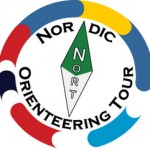
– In the future probably only head-to-head duels and sprint concepts are interesting for further development as TV sports. Within a short time frame this must have consequences for which disciplines are on the program when international championships are organized.
This is part of Bjørnar Valstad’s comments after the two first races of the Nordic Orienteering Tour – published at the webpage of the Norwegian Orienteering Federation earlier today (Norwegian text).
Long horizon
The article also includes comments from Valstad regarding the TV productions from the first two NORT races. Valstad agrees with many of the comments given in the interesting discussion after the article on the KnockOut sprint in Stockholm here at World of O – i.e. that the TV productions from the first stages of NORT have not been good enough as a TV product. However, Valstad points out that it is important to have a long horizon in this work.
– We need to understand that the development of orienteering as a TV sport takes time and resources. If we are to succeed with in the goal of increased visibility and increased market value, we have to build concept with entertainment value, and make sure that the productions are good enough so that the excitement comes through to the TV viewer.
Valstad stresses that we need to give the concepts time to mature.
– We need two to three years until we can see if we have succeeded. All of Orienteering Norway wants this development, and we must use the necessary resources.
Three central elements
Head-to-head duels, GPS-tracking and many TV cameras is the secret sauce for a good TV production, according to Valstad.
– I think it is obvious that it is necessary to have three elements [in the TV production] to succeed in the future. Those are: Head-to-head duels, enough cameras to cover large parts of the course and GPS tracking. Take away one of the elements, and the TV broadcasts get boring. Therefore the development is obvious. A lot more competitions must be held as mass start, chasing start or other head-to-head concepts. And if IOF allows for more competitions in NORT, this can within few years become a spectacular week with many exciting competition elements. We have even discussed introducing one or more night legs without having discussed any specific details.
Agreement between Norway, Sweden and Finland
The article also tells that Norway, Sweden and Finland have made a political agreement for the years 2010-2013 to make sure that there are TV productions from all competitions in NORT and all international championships which are organized in the Nordic countries. The agreement ensures that each country has a duty to pricude good TV pictures, and make these available for the national TV companies. Through this cooperation, at least 3-7 TV production will be secured each year in addition to the international championships.
What is your opinion?
In my opinion, the significant effort initiated by Sweden, Finland and Norway in order to try to develop orienteering as a TV sport is very interesting – and surely good for the sport. The Nordic Orienteering Tour is a very good way to try out the new concepts, and I think a lot will be learned in this first edition (and has already been learned) – and that NORT will get very interesting in the years to come. You may agree or disagree on some of the conclusions – but without really trying (and failing), it is difficult to develop further. I think we need the head-to-head type concepts as part of a TV strategy, but I also hope (and think) that more “hardcore” orienteering can have a very good life on TV for a broad audience in the future when profiles have been built and it is part of an overall strategy.
Keep posting your comments and discuss the concepts – I am sure some of the responsible for deciding the way forward will read part of the discussions, and use it in developing orienteering as a TV sport further.
 World of O News
World of O News
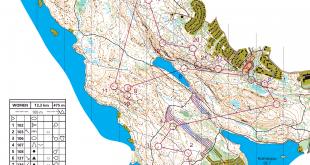
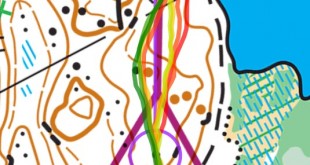
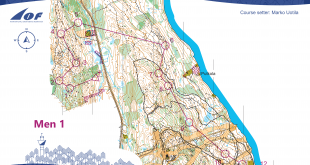
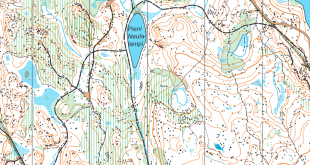
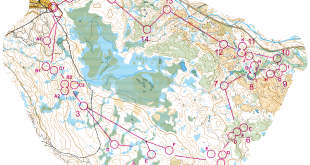
Orienteering is great Sport as it is don’t need to be a show or a TV show .
Is good that all the Orientereer colud have the same race …from 5 zears to 90 zears or more … Ithink live speaker and gps … on internet TV as less future than the web …. I’ probably far to idealist…
i can only agree with everything that was told here. i think that the k.o. system is interesting enough for the broad audience to accept it. think it could get even more interesting if the k.o. system would have such concept as a 2 lap system, where the course consists of two different laps in opposite directions drawn like the number 8 for example, then you could have 2 or more runners start at the same time, running 2 different parts of the course and then combining in the end where they join and go head to head for the last part of the course. easy understandable, attractive and better o skills required. but this system considers gps which should be a standard, because it gives more information to the commentators and of course to the spectators.
i also agree that the attractivnes is very important and that after the people meet the sport they get more open for variations of it, such as hard terrain, long course etc.
and yes of course how could i forget, if u want it to be a success please the commentators should also comment in english, so that we who don’t understand any scandinavian language could also understand whats going on. that is one of the most important things along the production.
Knock out spring has very little to do with orienteering
Who wants orienteering to develop this way.
The 100.000ths of “normal” orienteers – don’t think so.
The leaders – probably. It makes them look better and they get more money
The elite – some of them.
> Knock out sprint has very little to do with orienteering
@Guy: Did you try to run a KnockOut sprint? I have tried running KnockOut-sprint type races, and also set it up on local trainings. It is a lot of fun, and people in all ages found it fun and interesting. We used some forking/butterflies – and running it in a fast forest with some technical parts makes it even more fun. It hopefully will never replace “real orienteering”, but I’d definitely say that there are variants of the KnockOut sprint which have a lot to do with orienteering.
But as you, I’m not convinced that KnockOut sprints are the future for orienteering, but I think it is important to experiment with the concepts in order to see how it is possible to make orienteering a sport which is interesting for spectators/TV viewers also outside the orienteering community. NORT seems to me to be an excellent place to do these experiments – but I hope this won’t be taken further to championships until one is certain that one has a concept which really works both for TV/spectators and the runners.
However, I also think that it is possible to make long distance orienteering races interesting for TV with clever use of delayed broadcast, GPS tracking, pre-made video snippets, helmet-cam type snippets, etc. It is more challenging to develop the concepts than for a KnockOut sprint, but I’m sure that the work on NORT will throw off some ideas in this direction as well.
BTW: I don’t think the leaders get a lot of money out of this:)
I have seen a number of televised orienteering events during the past years, most notably the Finnish “Huippuliiga”-series but also several of the webcasts from the WOCs. Compared to these, the broadcast from Stockholm, as seen in Finland, was an all-time low. What I got was a lot of tourists drinking coffee, a fountain i a squeare, some people running in a row and a lot of a map of “Gamla stan”. There was no presenting of routechoices and no follow-up of what happened. Most notably, when there finally was some exitement, i.e. Sime losing it in the end, there was no explanation of what had happened or how. Although there are a nuumber of understandable reasons, I really do not see the “concept” bringing anything new to promote the sport. The broadcast would have been better with a more inspired commentator, with more cameras and better foresight into the races, but that goes for any broadcasted orienteering event. In order to make it into mainstream TV, the sport has to be conceivable by an “ordinary” sports commentator with a little insight to orienteering. You can’t rely on Per Forsberg serving everyone in bad english. I agree with Valstad that GPS-tracking and many TV-cameras are needed but I disagree on the head-to-head topic. Duels are indeed exciting, when it is a result not a pre-requisite. The end of a big relay when two teams are still together, or end up together or are about to end up together are exiting to follow but individual races with mass start are simply boring. Orienteering is exciting, everyone involved in the sport knows that. What we need to do is to present the things we are excited about not try to find anything else that someone migth be exited in. For orienteering to make in in TV we need good foresigth: i.e. a presentation of the decisive routechoices (and of course the runners), follow-up: i.e. many cameras and gps, and room to elaborate on the surprises: i.e. insult to injury when mistakes are made. Further, this has to be packaged and presented so that it can be narrated by an ordinary sports commentator preferably with an expert sidekick. The use of gps needs to be both systematic and dynamic, and I think we still need to develop that part. All in all, I love orienteering and I am a heavy user of sports on TV, but broadcasts like this one leve me cold.
I wonder what ‘the goal’ and thereby the base to define the term ‘success’ is.
As I understand, NORT is another attempt to make orienteering a ‘media sport’*.
[* we need to get rid of the O-thing! Maps and LiveTracking are for O-geeks. Not-O-pepole see no fun in that. Ever thought about how stupid that looks if the best female orienteerer ever is not able to count to four?]
But this is no real goal. The question is, what do you expect from creating a media sport? For example: More money for the elite and/or for the clubs? More self-esteem for the sport? More cheering/idol status for the runners? More participants at competitions and/or more members for the clubs ? Better understanding of orienteering? Easier access to forests?*/**
[*I do not mention the olympics here, that would be a waste of time]
[** Taking the TdSki as a role model***. What exactly is the success of it? What was the success of FIS changing disciplines every WorldChamps since xxxx]
[*** btw. TdSki has the TDF as a role model]
This is really needed: To define the goals and to measure the ‘success’ on them. Just to avoid us from learning nothing from introducing 2-Minutes Intervall at the WOC Long and Sprint just to be more media friendly or at least to see what my favourire Sports&Media-scientists say: ‘To change a sport does not really alter its success in the medias but it changes the sport‘ (Lamprecht/Stamm 2002).
Tv production from Gamla Stan was not so good. Positive that athletes looked like serious sport but mainly it was not possible to see what happened. Runners just passed camera and it was unclear what happened between those moments. No idea what happened to Hubmann or Niggli. It was good to see map but for non-orienteer it didn’t offered anything that special. Too complicated and short moments without examples of route choices or gps.
Gamla Stan was maybe a good experience but not a product for the future. Orienteering offers much more than this kind of games
First part of Tour has been joke. Joke for athletics, joke for audience. Many athletics has skipped the Tour. Easy to understand.
Same time we have seen real orienteering from Jukola. TV broadcast has done using cameras, tracking, online doing in nice terrain.
Who like to see on TV some fellows running between cafes and sortly you will some “map” where you can’t see nothing. There was people but not real spectators. Poor, poor, poor. And again poor.
Why we believe that we need this kind of middle of city running to get respect for our sports ? We have all eXtreame elements to give views how hard&nice sport we have, middle of nature. We have enough citysports.
Jukola broadcast
http://areena.yle.fi/video/1084486 from start to 00:30
http://areena.yle.fi/video/1088458 00:30 =>
More interesting is the plan, how you create ex. 1 h broadcast from long distange. 2-4 h broadcast is too long. Ex. 30-40 min recorded/cutted+reorder/gps explanation/… and last 20-30 minutes in realtime.
Our sport is still mostly orienteering in nature – I hope/believe. That is the reason why we have selected this sport. We have seen on the TV something else.
Focusing TV section/places is the most important and how to use GPS (realtime GPS in not so good in many case, replay with explanation is more).
We have lot of sports which will be never big tv sport even they try everything.
I believe that we can do good TV broadcast without dupes and destroy our values. And get little more spectators, but not millions.
I agree with the coverage part of Valstad’s opinion, but I don’t think that orienteering should be presented in TV just as head-to-head fights. People watching the TV show in Stockholm might think that orienteering is something like “the strongest takes the lead and the others follow”, which cannot even be really denied in this Knock-out sprint format without forking. For non-orienteers, it most probably looked like “just another running event, but why the hell do they need a map??”. In my opinion, the point emphasising head-to-head duels should be replaced by “making the O part transparent to the public”, which could mean to discuss possible routes on interesting legs, explain why a leg is easy/difficult, how to read the map, what it means to cross a thicket, a swamp or a cliff etc. If I remember well, the 2008 world champs in Czechia already used Google Earth to display route choices on a long leg with the relief shown in 3D. This is a good example how relevant facts in O can be made more transparent to non-orienteers.
What do you think about future of Micro-O (Orient-Show)? Such event is most simple for spectators-non-orienteers.
And Orient-Show presents main point of orienteering – route choice and realization.
I have another revolutionary idea: combined city sprint and parkour. See this video: http://www.youtube.com/watch?v=SmVsa1SFgfU
What do you say? Wonderful TV picture! Many-many young will come to modern orienteering with parkour elements. Now this way is forbidden (ISSOM 2007):
521.1 Impassable wall (forbidden to cross)
524 Impassable fence or railing (forbidden to cross)
But this is deviation from entity of orienteering:
IOF Rule 1.1 Competitors must visit a number of control points marked on the ground in the SHORTEST POSSIBLE TIME aided only by map and compass.
I also do not necessarily agree that head-to-head duels are the way of the future … if anything what Stockholm showed is it doesnt matter what concept you use, a bad TV production is a bad TV production.
Whenever I think of O and TV, I think of the World Rally Championship – another sport with staggered starts and a race aginst the clock. WRC has a huge global audience – the difference being of course everyone knows how to drive a car and can appreciate the skill of the rally driver.
The problem with Orienteering is only a small part of the population can understand and appreciate the talent of the elite orienteer. The challenge for TV orienteering is to present the action of an intricate and technical sport in a way that can be understood by a general viewer. Not easy. But in some respects that has nothing to do with race concept. Until there has been experience of good TV productions of traditional formats you can make no judgement of how good or bad our traditional formats are for TV.
Whether a sport is “boring” or “interesting” is not the only thing for TV sports. What I have seen from South Africa makes me wonder at the irony that one of the most boring sports to watch on TV is also the most popular.
Orienteering is not boring, it is not understood. That is the problem that needs to be solved, and changing race formats (Micr-O anyone?) is not necessarily the answer.
With all due respect, I watched the videos from the NORT final and was impressed. That is good entertainment:
http://www.nrk.no/nett-tv/klipp/647480
http://www.nrk.no/nett-tv/klipp/647481
Great comment from Rob. I haven’t yet seen ANY *really* good tv productions of orienteering. Many of them had been interesting for o-fanatics, but the real drama of o-sport has not been shown. I think that we need a really good screen writers who can implement shows almost like Jukka I described.
@Rob: I’ve also thought about the World Rally Champs related to orienteering broadcasts, and I think that this type of format (I’ve typically seen 30-minute broadcasts in the evening) could be very good for orienteering if you throw in GPS-tracking, interviews etc.
@J: I still haven’t seen the NORT final as there was no big screen on the event and I traveled directly to Spain, but I am looking forward to watching it when I get back.